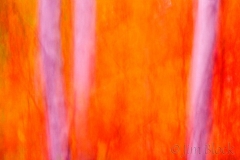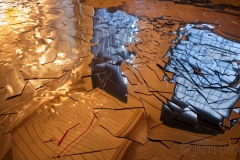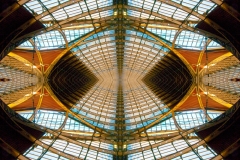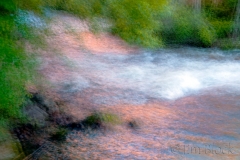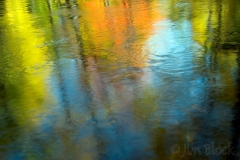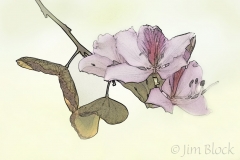There are many ways to blur an image and/or your subject. Sometime you simple fail to hold the camera steady. But intentional blurs, normally with long exposures can produce unusual images--something the eye cannot see. Moving water with a tripod and long exposures is a classic technique. But one can also set a long exposure and pan, rotate, zoom, and swing the camera during the exposure.
41 Photos
These initial pieces of glass are mirrors from a "Film on Water" exhibit held in Newport, NH during the summer of 2009. A moving light played over the mirrors causing waves much like the water. It was mesmerizing. I took some initial photos handheld with a small camera then went back the next day to do more with larger tools.
9 Photos
Perspective has many meanings. Thinking photographically it can mean the perception of depth; the relative size of objects in the image; or a point of view, often a unique or special one. The illusion of three-dimensional depth in a two-dimensional image can be enhanced by using a wide angle lens with a strong foreground object, showing texture changing with distance, light brightness variations, side light, converging parallel lines, overlapping of objects, and other techniques and visual clues. The relative size of objects in the image can only be changed by moving your feet in conjunction with the changing focal length of your lens, not by “zooming” from a fixed position. This can be a very powerful compositional tool in a number of ways. The aspect of perspective that is the subject of this gallery is “point-of-view”: seeing differently, finding the unusual in the ordinary. Only two images here (green car and oriole) are Photoshop creations. The rest are fairly straight shots. This gallery concludes with two related images--can you figure them out? It's a matter of perception.
28 Photos

